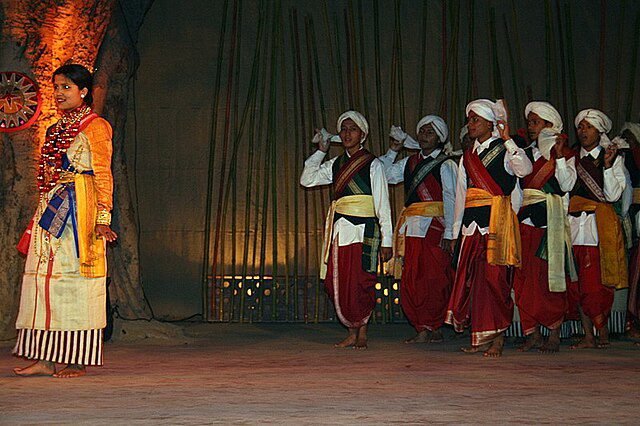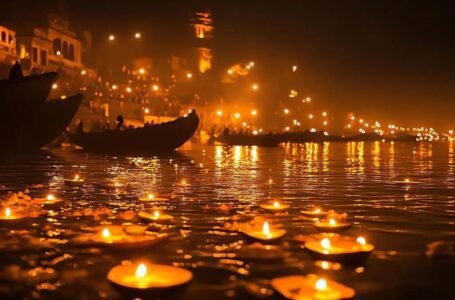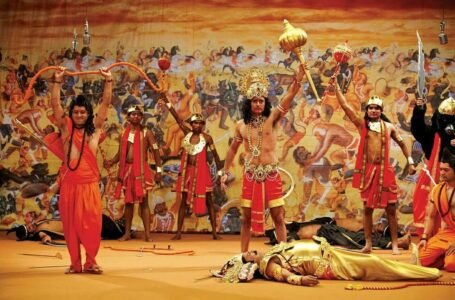Laho Dance of Meghalaya: A Celebration of Unity and Joy

Meghalaya, the land of rolling hills and rich tribal heritage, is home to some of India’s most vibrant and unique folk traditions. Among its many cultural treasures, the Laho Dance stands out as a joyful and communal performance, deeply rooted in the traditions of the Pnar community. Unlike other folk dances that rely on elaborate musical instruments, Laho Dance is known for its rhythmic movements accompanied by the recitation of lively couplets. Primarily performed during the Behdienkhlam festival, this dance celebrates unity, happiness, and the cultural identity of the people of Meghalaya.
However, despite its historical and cultural significance, Laho Dance is rarely seen today, as modernization and changing social patterns have led to its decline. This article explores the origins, performance style, cultural relevance, and the challenges facing this unique dance form, along with efforts to preserve it for future generations.
Historical and Cultural Context
The Laho Dance has deep ties to the Behdienkhlam festival, a significant annual celebration among the Pnar community in Meghalaya. Behdienkhlam, meaning “driving away the plague,” is observed to seek divine blessings, cleanse the land of evil spirits, and bring prosperity. It is a grand occasion filled with rituals, sports, and music, where the community comes together to express gratitude and hope for a bountiful harvest.
Among the various traditional performances during Behdienkhlam, Laho Dance stands out as a social dance that allows both men and women to participate, making it an inclusive and entertaining experience. The dance is not just a means of celebration but also a symbol of unity, reflecting the harmonious coexistence of the Pnar people.
Performance and Symbolism
Dance Formation and Movements
Laho Dance is a group performance in which men and women hold hands, link arms, and sway rhythmically to the recitation of couplets. The steps are graceful yet energetic, demonstrating perfect synchronization and harmony among the dancers. The dance begins with a woman standing between two men, linking arms with them, and moving in unison.
Unlike many folk dances that rely on drums and other percussion instruments, Laho Dance is accompanied by a singer who recites witty, ribald couplets in a melodic rhythm. These verses often contain humorous anecdotes and satirical observations that entertain both the dancers and the audience. The absence of musical instruments makes the dance unique, as the spoken words set the pace for the performance.
Traditional Attire
The vibrant and colorful costumes of Laho dancers add to the visual appeal of the performance.
Women wear elaborate gold and silver jewelry, traditional Khasi-Pnar attire, and brightly colored garments that reflect their rich cultural heritage.
Men, on the other hand, dress in traditional outfits that are simpler yet equally striking. Their limited use of jewelry highlights a contrast that further enhances the aesthetic appeal of the performance.
The costumes are symbolic of the tribe’s love for colors, festivities, and artistic expression, making the dance a spectacle of visual and cultural delight.
Regional Variations and Alternate Names
The Laho Dance is widely recognized within the Pnar community of Meghalaya, but it also has variations and alternative names in other parts of the state.
- Chipiah Dance – In certain regions, Laho Dance is referred to as Chipiah Dance. Though the dance steps and formation remain largely the same, subtle differences in costumes and expressions give it a distinct identity.
- Wangala Dance – Among the Harp tribe of Meghalaya, the dance takes on a different name. The Wangala Dance, though similar in essence, incorporates regional influences and ritualistic elements that distinguish it from the traditional Laho Dance.
These variations highlight the diversity of tribal cultures in Meghalaya while also emphasizing the common theme of unity and celebration.
Decline and Challenges
Despite its cultural richness and historical significance, Laho Dance is rarely seen today. Several factors have contributed to its decline:
- Urbanization and Modern Lifestyles
With the increasing influence of urban culture and modern entertainment, many traditional dance forms, including Laho Dance, have been overshadowed. Younger generations are more inclined toward contemporary music and dance, leading to a decline in interest and participation.
- Changing Social Norms
Traditional folk performances like Laho Dance were once a social bonding activity, bringing communities together. However, changing social structures, migration, and lifestyle shifts have reduced the frequency of such gatherings.
- Lack of Institutional Support
Unlike other Indian folk dances that have received government recognition and funding, Laho Dance has not been actively promoted at a national level. Limited financial support, lack of cultural preservation initiatives, and minimal documentation have further contributed to its decline.
- Influence of Mainstream Entertainment
The rise of digital media, cinema, and commercial dance performances has also played a role in reducing the visibility of Laho Dance. The younger generation often views traditional dances as outdated compared to the fast-paced and visually engaging forms of modern entertainment.
Revival Efforts and Preservation
Despite these challenges, efforts are being made to preserve and revive the Laho Dance:
- Cultural Festivals and Events
Several local festivals and tourism initiatives are reintroducing Laho Dance to a wider audience. Cultural organizations and community leaders are encouraging its inclusion in major festivals, fairs, and tourism events.
- Government and NGO Involvement
Local government bodies in Meghalaya have begun promoting traditional dance forms through folk art programs and cultural heritage initiatives.
NGOs and cultural preservation groups are working to document and teach Laho Dance to younger generations.
- Educational and Awareness Programs
Introducing Laho Dance in school and college curricula can play a significant role in its preservation. Conducting workshops, storytelling sessions, and practical demonstrations can help students develop a deeper appreciation for their cultural heritage.
- Digital Documentation and Social Media
The rise of social media and digital platforms provides an opportunity to document and share traditional dance performances with a global audience.
Videos, documentaries, and live performances on online platforms can generate interest and attract younger generations.
Collaborations with cultural influencers and dance enthusiasts can further enhance its visibility.
Conclusion
Laho Dance is more than just a performance—it is a celebration of life, unity, and tradition. Its unique features, including the absence of musical instruments, synchronized movements, and humorous couplets, make it an extraordinary cultural expression. However, modernization, social changes, and lack of institutional support have made it increasingly rare.
Revival efforts through festivals, education, government initiatives, and digital media can help safeguard this precious art form. By preserving and promoting Laho Dance, we not only honor the cultural identity of Meghalaya but also ensure that future generations experience the joy and vibrancy of this remarkable tradition.
The Laho Dance, with its rhythmic grace and communal spirit, deserves to be cherished, celebrated, and carried forward as an enduring symbol of Meghalaya’s rich heritage.


